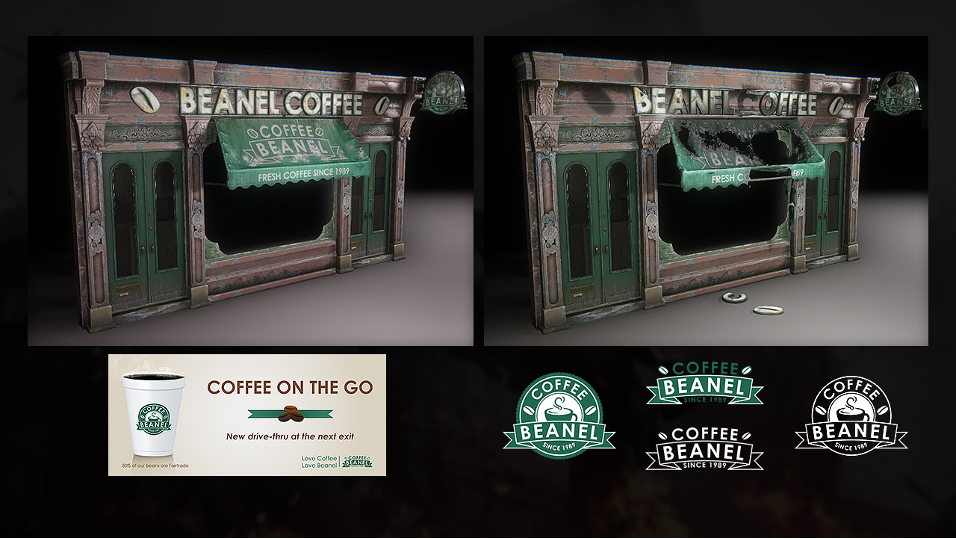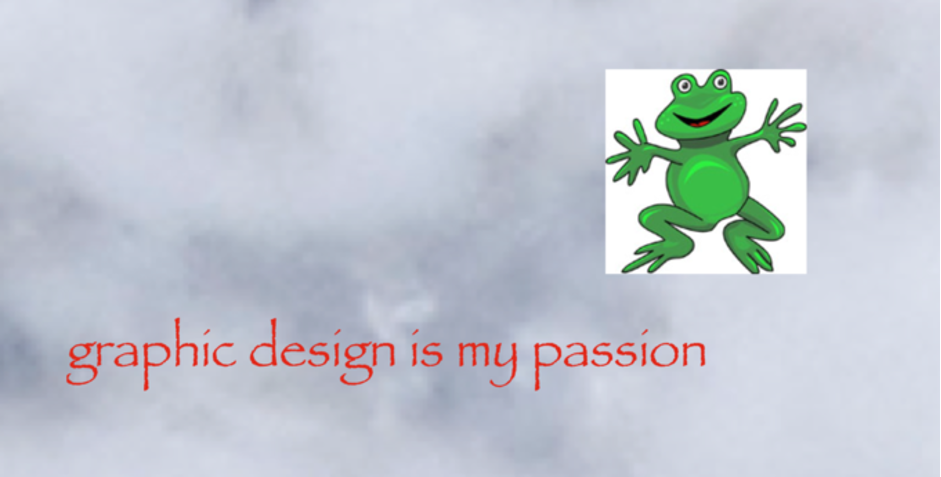Have you ever wondered exactly what a 2D/UI artist does within a studio or what the difference between UI (User Interface) and UX (User Experience) really is?
Perhaps you're a graduate on the lookout for your first role in 2D art and need some portfolio tips.
This blog post contains the answers to your questions along with tips that will help you get your portfolio in shape for your next opportunity, with the help of two members of Dambuster's 2D/UI Department: Senior 2D/UI Artist, Faye Kime and Lead 2D/UI artist, Leanne Bayley.
What exactly is the job?
Different studios have different descriptions and duties for their 2D/UI art roles. They can be very specialised - for example, only involving the creation of UI Art for the game - or be a multi-hat role meaning you will also be involved in the UI Design and non-UI work.
The role is varied within Deep Silver Dambuster Studios and involves everything from graphic design/illustration work to UI icons and menu elements - which ensures there is never a dull moment!
What is the process of designing and implementing 2D art?
At Dambuster, the UI art role handles the user interface for all the Menus, HUD (Heads Up Display), and any other additional interface graphics. From the UX Design and concept stage, all the way to placing it in-game. Once we have the design intention for a feature from the Game Design team, the first step is to greybox the layouts and interactions.
We work closely at this stage with Game Design to ensure all essential information is clearly communicated to the player. We then test and iterate and then keep testing and iterating until all the information is as clear as possible and all the interactions are smooth.
Once the design is working in greybox form, we give the menu or HUD element an artpass, whilst making sure to stick to the UI art style guide rules along with any motion graphics mock-ups. At this point, there are often more iterations before the UI in-game is worked on, as sometimes the artpass can make information less clear.
Once in-game, we work with Gameslab (Deep Silver's User Research function) to get more feedback on the feature from a wider group of players; we then take the feedback and iterate on it until we have something that works in as many scenarios as possible. The end goal is to have a user experience that, oddly enough goes as unnoticed as possible! The smoother and more intuitive our work, the less it will be noticed by the player, meaning they are more immersed in the game.
[The process of designing and implementing 2D Art]
While the UX and UI have to work with the game's design to ensure the players are getting the best experience possible, the UI also has to work with the art direction and, often, the game's branding. A style guide is worked on early in the game's development, but much like the rest of the project, it will be iterated on and updated throughout pre-production.

On the 2D side of things, we work with the rest of the Art Department using graphic design practises to create assets such as:
- fictional brand logos/advertisements
- graffiti
- tattoos
- miscellaneous 2D images for props like photos/handwritten notes We create art used within the game's environment and is placed on weapons and characters, which helps the game world feel more realistic, relatable, and alive. We also work with the Narrative and Level Design teams to produce props and art to guide the player or give the game's lore some visuals.

[Beanel is a fictional coffee brand created by the 2D art team for Homefront: The Revolution]
What is a greybox and an artpass?
A greybox is when we arrange the required information on a page in its most basic form to understand if the design is working. There is no art at this stage, as it would just be a distraction from the goal of the greybox.
An artpass or art mock-up is where we take the greybox and give everything displayed on that page an art treatment consistent with the UI style guide.
What exactly is the difference between UI and UX?
The terms UI and UX are used interchangeably when they are fundamentally different, but you can't have one without the other.
The UX (User Experience) is the overall feel of the interaction/experience between players and the game. When applying this to a game, it's about finding the best and easiest way for a user to perform an action and mapping it out. For example, swapping out a weapon. UI (User Interface) is the visual representation and function of how players interact with the game. The UI is the buttons, typography, animations, and colour players will see when they want to swap out their weapon.
What does an average day look like for a 2D artist?
Because creating UI requires a lot of cross-departmental communication to get things into the game and working, days often start with a scrum to catch up on who has done what so far and if there are any issues or blockers. After that, it's time to open something up in the Adobe suite depending on what the task of the day is.
If it's greyboxing, XD will be used. For art mock-ups, icons and graphic design/illustrative work, a mixture of Photoshop and Illustrator will be used. Sometimes, the days are broken up with a meeting for a new feature that needs UI to discuss the UI's requirements.
What're your favourite aspects of the job?
The magic moment of seeing all the UI in-game working as intended as it takes multiple departments' work and time to tie up loose ends (and nudge pixels over by 1!).
You just get the feeling of "Yes, the game actually feels like a game now!"
Within 2D work, some of the graffiti, logos, etc., we have made will be used in marketing and promotional materials such as clothing, posters, and other merchandise. When the digital art you've made by staring at a screen takes on a psychical form, that feels awesome!
How did you get into the role?
People rarely have the same journey into this job role. The one thing they will all share, though, is a background or passion for graphic design, as well as liking a challenge and being open-minded.
Faye's Journey
‘I enrolled at University studying Animation, which covered 3D and 2D, which allowed me to work on my motion graphics skills. Once I graduated, I managed to get an internship placement at Crytek. I've been working my way up the ranks since. I have always loved graphic design and games, but before I landed my first job, I was unaware of how I could combine the two’ - Faye Kime, Senior 2D/UI Artist at Deep Silver Dambuster Studios
Leanne's Journey
‘I studied 3D computer animation and visualisation and got my break in the industry from making connections at a games conference. Since then, I've had several roles in game development: game designer/creative producer/indie dev/freelance 2D artist and now Lead 2D/UI artist. I've always wanted to work in games and have arrived in a role that covers UI and UX - which is the perfect intersection of design and art’ - Leanne Bayley, Lead 2D/UI artist at Deep Silver Dambuster Studios

What are your top tips for getting a job?
There's no magic formula to getting your dream job, but here are some tips for when it comes to applying for a 2D/UI artist role:
· Ensure you attach your best work or the work that most closely demonstrates you can do the job advertised. There are a lot more artists than there are roles in studios, and when we look through applications for an open job, we have to make very quick decisions on lots of portfolios.
· You should look to attach a tailored portfolio to the job application and a link for further reading. If the sample selection you give us ticks the right boxes, we will look through your supporting links (Artstation, Behance, website, etc.).
· In addition to this – if you've worked in a team on a piece/project, make sure you communicate exactly the work you contributed to any screenshots or glamour shots you include in your portfolio.
· Present your work in mind for the job you are applying for. If you apply for a job that covers graphic design and UI, your portfolio should demonstrate that you understand how to lead the viewer's eye and show your work in the best possible light.
A well-presented portfolio stands out over and above a static gallery or image feed; it also shows us that you've taken the time to understand the job we are advertising and a real commitment to getting that job! This also extends to your CV; we see so many bland, text-heavy word documents. If you can apply a flare of graphic design to it, you will definitely stand out.
· If you have no released games under your belt, think about doing UI reworks of existing games or imaginary games and creating some fictional brands and related promo materials.
We hope this helped!
If you are interested in becoming a 2D Artist or any other role in the games industry, be sure to keep your eye on our Careers section for relevant vacancies.




